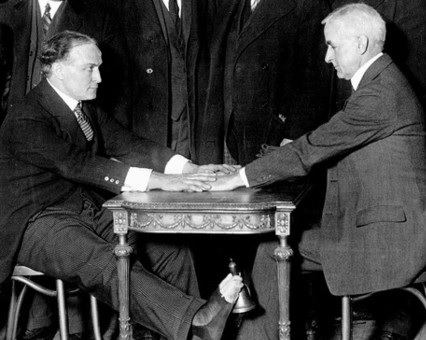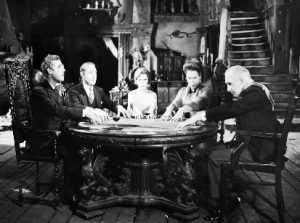Magician David Fox explores the origins and significance of the Tarot Deck…
‘it is a complete symbolic map of all the transformative processes in the universe’
Dr. David Shoemaker, Chancellor of the International College of Thelema
The Mystery of the 78

The origins of the Tarot deck are as mysterious as the cards themselves.
As a professional magician, I owe an incalculable debt to the 52 pieces of laminated cardboard popularly known as the humble deck of playing cards. However, I am fully aware that the origins of the four suits are far more mysterious and profound than even the most mystifying card trick in the conjurer’s repertoire. It is widely accepted that the contemporary deck originates from the Tarot cards: that peculiar collection of colourfully illustrated rectangular pictograms which are most commonly utilised for divinatory purposes.
The origins of the Tarot

The Tarot of the Witches. Popularised in the James Bond movie ‘Live and Let Die’
Some Occult historians claim that the Tarot originates from the times of the ancient Babylonians and the Egyptians. There may be a grain of truth in this somewhat Romantic theory, but the earliest recorded proof we have of such cards being used (primarily for parlour games) dates from late Medieval times. The wealthier inhabitants of Milan and present day northern Italy could afford to have such cards produced and ‘the game of trumps’ became a popular pass-time for the upper classes. Nonetheless, those with a deeper awareness of the arcane would always maintain that the cards were more than mere accoutrements for frivolous flights of aristocratic fancy. The rich symbolism evident within the Tarot clearly illustrated something much more profound, enduring and mystical. The ancient mystery schools had long since communicated Truth in such a manner: through the use of signs, symbols and codes which could only be discerned by those of the appropriate spiritual disposition and awareness.
Designs of Tarot

A Shakespearian Tarot Deck. There are many designs of Tarot.
There is a multitudinous array of Tarot decks currently available for those who wish to explore the intriguing art of Cartomancy (the practice of using cards for divinatory or fortune-telling purposes). The enduring aesthetic appeal of the Tarot is a fitting testimony to the skill and talents of the artists who have sought to recreate, and offer their own unique interpretations of the Major and Minor Arcana, throughout the aeons. One of the most widely celebrated and used of decks is the Tarot de Marseille. This vibrant collection of pictograms dates from the late 16th century and is favoured by contemporary cartomancers the world over. However, it must be noted that the choice of deck is entirely a matter of personal preference. In Occult circles it is commonly accepted that for those who are so inclined to explore the world of the Tarot, the deck will choose them…
The Book of Thoth

The Thoth Tarot deck is one of the most beautiful ever created.
Aleister Crowley has bequeathed to posterity an incredible text entitled ‘The Book of Thoth’. This is a profound and engaging treatise on both the origins and significance of the Tarot. The Thoth Tarot Deck (which accompanies the book) is truly an exceptional work of art, and was finalised, after several years of toil, by both Crowley and Lady Emma Harris, who carefully painted each card to Crowley’s precise specifications. Indeed, her instructor often insisted that a deisgn be painted several times in order to capture the True essence of the particular pictogram.
The Book of Thoth is an outstanding demonstration of Crowley’s awareness and profound understanding of the Occult arts. Well versed in the philosophies of Qabalah, Astrology, Alchemy, Geomancy, I-Ching and Numerology, Crowley appreciated that the symbolism contained within the Tarot is essentially a synthesis of the ancient spiritual traditions of the human race. He sought to demonstrate this through the unique design of each and every card. Fundamentally, he understood the following principles:
The four suits of the Tarot correspond to the four ancient elements of Earth, Air, Fire and Water:
Coins are associated with Earth and mundane matters (money, material transactions)
Swords are associated with Air and thus the realm of the intellect (education, decisions)
Wands are associated with Fire: spiritual energy and vitality (masculine)
Cups represent Water and the realm of the emotions (feminine)
The Twenty Two Tarot trumps correspond with the paths on the Qabalistic Tree of Life, and the ten spot cards of each suit can be linked to the Sephiroth of the Qabalah in their corresponding element. Indeed, students with even a rudimentary awareness of the Western Mystery Tradition will glean much from working with this unique deck.
Methods of divination

Consultation of the Tarot permits us to view the ‘bigger picture’.
There are a variety of intriguing methods one can use in order to ‘divine’, or ask questions, with the Tarot. Some ‘spreads’ use several cards, whilst others may utilise the entire deck. I have personally found the well-known Celtic Cross method to be as effective as it is practical.
The following website by James Reeducks provides excellent instruction in conducting this spread, as well as an illuminating commentary on each particular card in the Thoth deck:
The Thoth Tarot Deck by James Reeducks
It must be borne in mind that the Tarot provides one with a valuable opportunity to assess a situation, or problem, from a new, and often refreshing, stand-point. Consultation of the cards should not be regarded as a crutch to disregard responsibility and passively accept a particular outcome. The curious harmony of will and fate may be perennial, but human beings can take more control over their destinies if they have the courage and conviction to do so. Indeed, the Tarot affords us with a startling insight into the curious forces which incessantly influence the lives of men and women upon this planet for better or for worse…








































